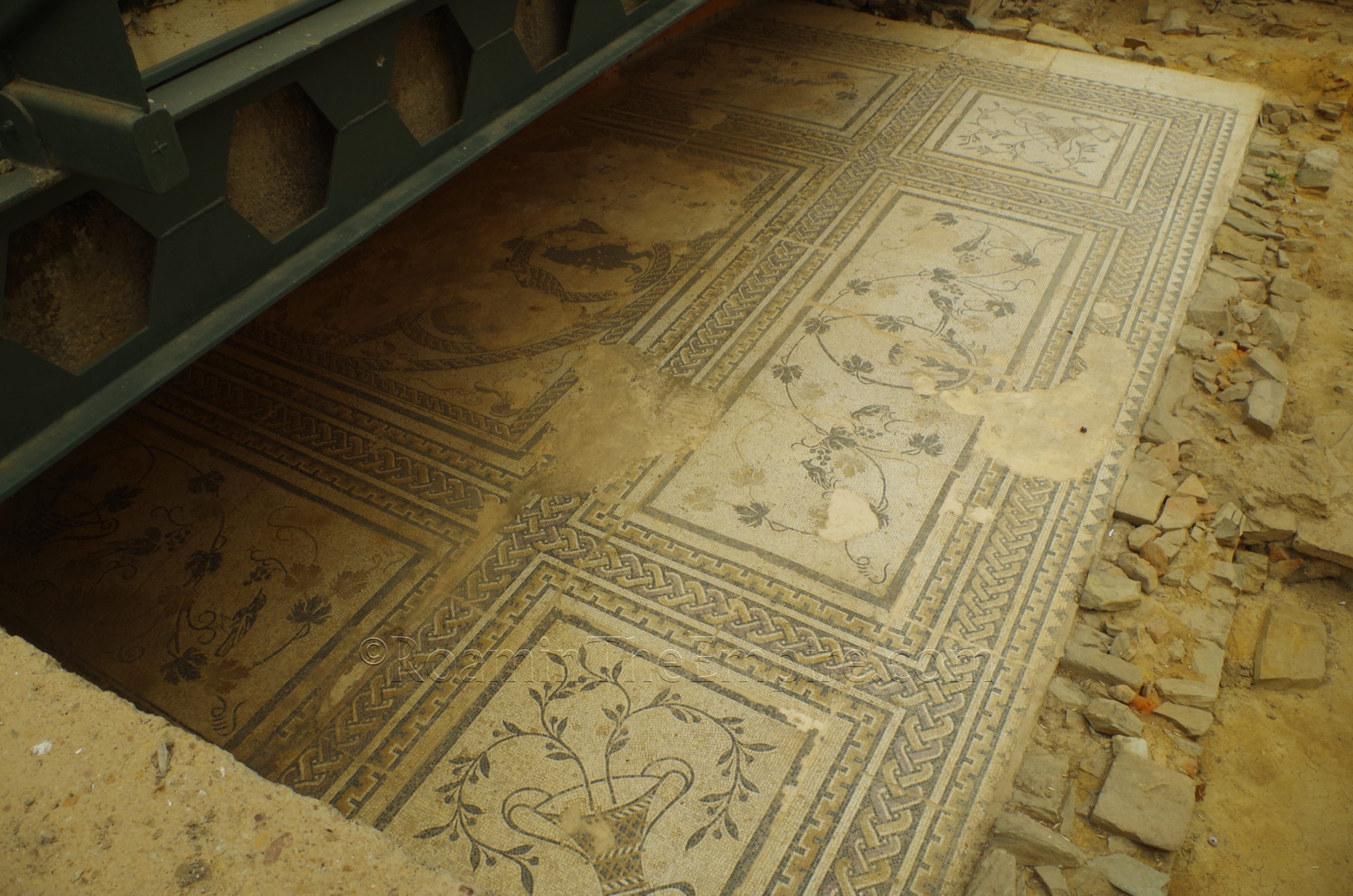
Continued From Asturica Augusta, Hispania Tarraconensis – Part I
Continuing out through the northeast exit of the Jardín de La Sinagoga, and then north on Calle Padres Redentoristas, is the Domus del Mosaico del Oso y los Pájaros, the Domus of the Mosaic of the Bear and Birds. Located at Calle Padres Redentoristas 19, the site is open access at any time with no admission. The wealthy residence was originally constructed in the 1st century CE, but underwent major renovations in the 2nd century CE. It seems to have been inhabited until the 4th century CE. Only about one third of the house is exposed in this archaeological area, with the rest being overlaid by the adjacent Iglesia de San Francisco. A walkway runs over the center of the excavated area, and the southern portion is also open to Calle Padres Redentoristas, while the rest is covered with glass panels through which the remains can be viewed.
The house gets its name from a mosaic in the northern part of the site, an area identified as a reception hall or oecus. The mosaic depicts, as the name suggests, a bear and birds in some of the panels. It dates to a renovation in the late 2nd or early 3rd century CE. The center panel, no longer surviving, likely would have depicted Orpheus. Unfortunately, this is not part of the site through which the walkway passes or from which there are particularly good views from the outside. It is also partially covered by an overhang of the sidewalk around the exterior. It’s a bit disappointing that the eponymous mosaic is kind of hidden from view.
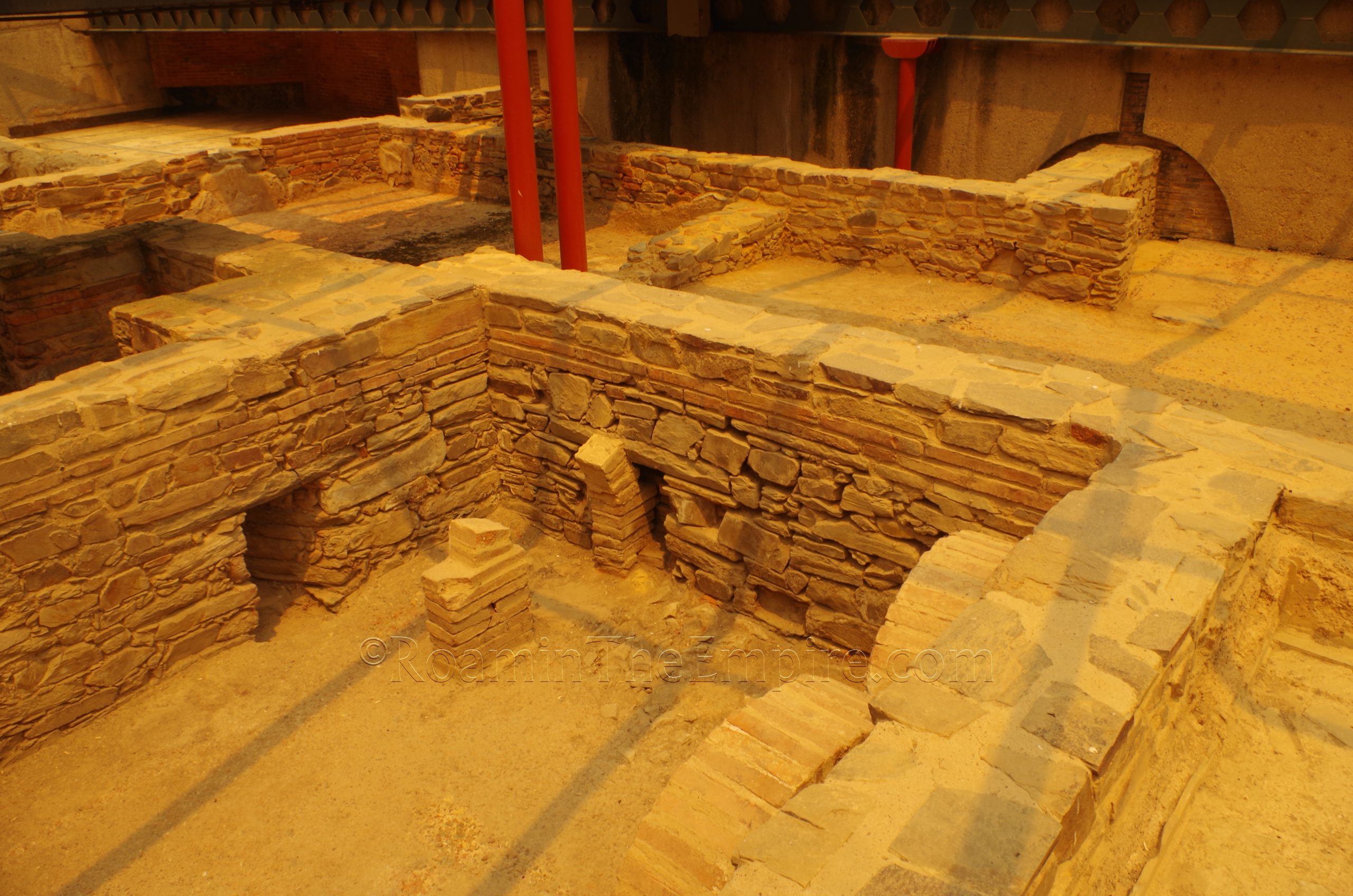
Adjacent (to the west) of the mosaic is an opus spicatum floor in an area that probably functioned as some sort of office area. Running along the side of the site facing the street, to the south of the walkway that spans the site, are the remains of part of the small private bathing complex within the domus. The area closest to the walkway preserves part of the tepidarium, which has a few arched reconstructions of the hypocaust system that would have been present. Beyond that, to the south, is a small corner of what would have been the frigidarium. There are a couple of informational signs in both English and Spanish located at the walkway across the site.
North up Calle Padres Redentoristas less than 100 meters, located at Plaza San Bartolomé 2, is the Museo Romano La Ergastula. The museum is open Tuesday through Saturday from 10:00 to 14:00 and from 16:30 to 19:00. On Sundays it is open from 10:00 to 14:00. It is closed on Monday. Admission is 4 Euros, but a combination ticket with the Roman Route (discussed shortly) is 5 Euros. Opposite the entrance of the museum is a reconstruction of a milestone in metalwork.
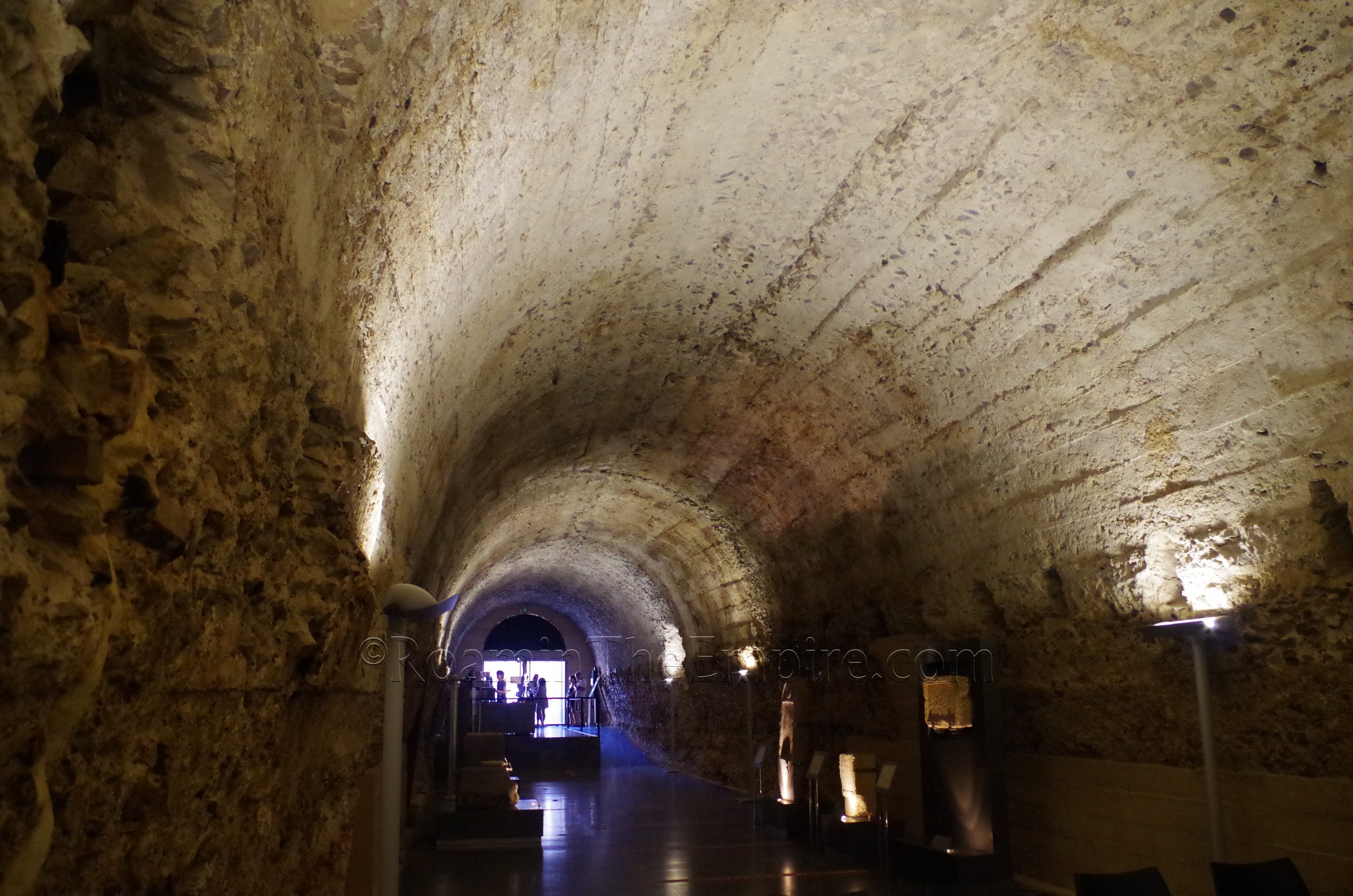
The entry area of the museum is located in a vaulted gallery of Roman origin, supposedly built over an ergastulum that was located below it, thus giving the building its name of La Ergastula. In reality, the connection of the ergastulum is tenuous. But, it does seem to be part of a cryptoporticus, perhaps associated with the podium of the temple of Asturica Augusta’s forum that was situated in the center of the forum. This gallery also includes a few lapidary pieces on display, as well as a small theater area in which videos about the city are screened.
The museum itself, contained in the adjacent rooms, it relatively small. There are a number of small finds as well as a few larger inscriptions. The collection has a few interesting coins and some oil lamps, but perhaps the highlight of the collection is some fragments of wall painting. The museum only took me about 25 minutes, including the video. There isn’t really much English information available, but a booklet with English translations for most of the object descriptions is available. But unfortunately not for the larger informational boards about some of the archaeological areas in the town.
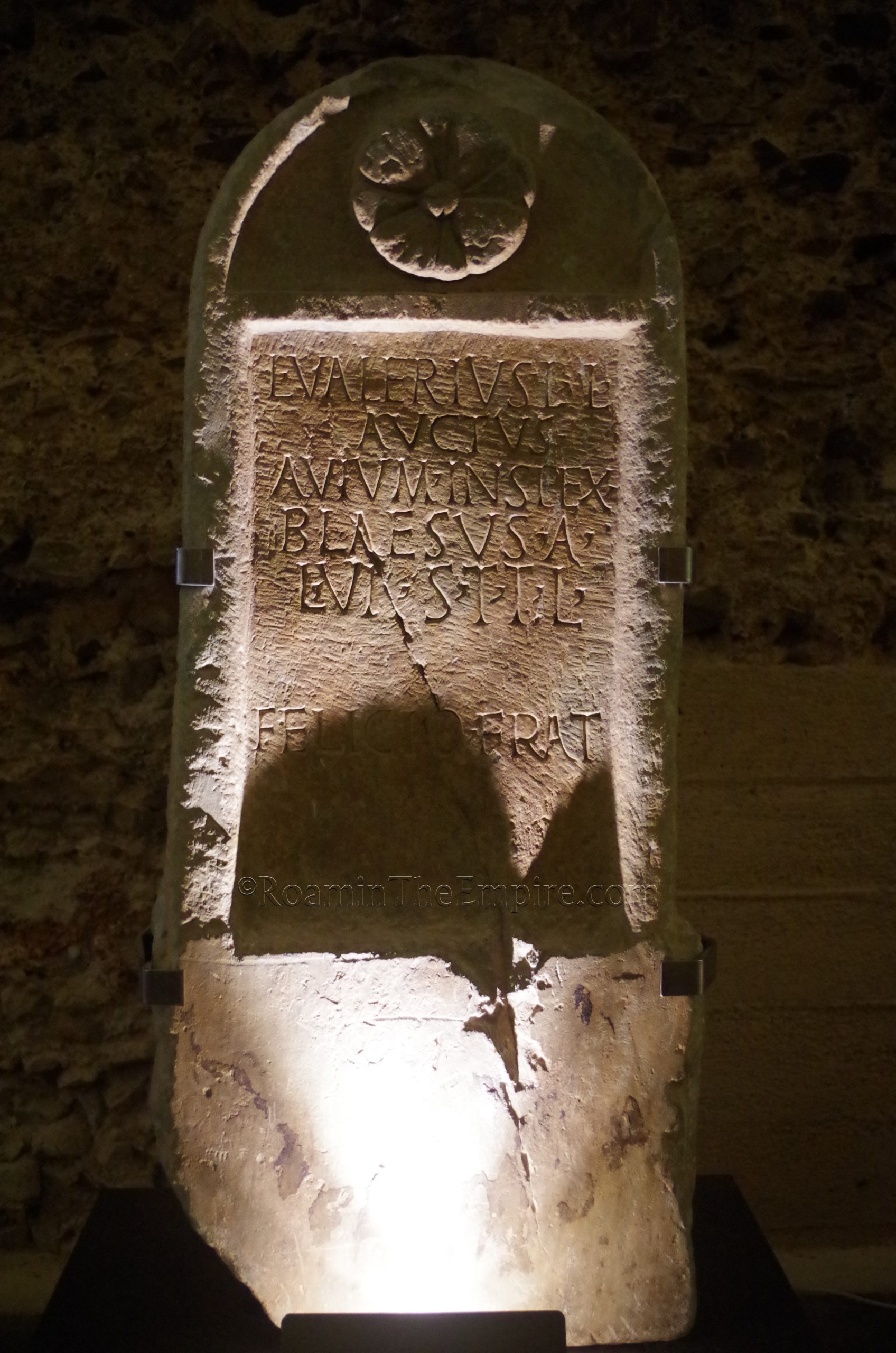
At the archaeological museum, or in advance by phone (+34 987 61 69 37) or email (rutaromana@astorga.es) to visit the Ruta Romana, a series of archaeological areas associated with Asturica Augusta that can only be visited with a guide. The times at which the tour is given can change, though typically they are supposed to be daily in the summer (July through September) except for Mondays at 11:00 and 17:00. Additionally there is typically no tour on Sunday afternoon, and in September the afternoon tour moves to 17:30. My tour, in July, started at 17:45. Outside of those months, there may or may not be tours. In any case, it’s best to inquire beforehand. The tickets are bought at the museum, and again can be purchased in conjunction with the museum ticket for 5 Euros (just 1 Euro more than the base museum price). I bought one just before it left and it was no problem, but theoretically the tours can book up. The tour meets in front of the museum. These tours are offered only in Spanish. My guide spoke very little English, but I imagine it is possible some of them might be able to offer more information than others in a language other than Spanish. I still got a lot of out of the tour with my limited Spanish, and there are some signs at the sites with some English information. The tour consists of four stops that cannot be visited without a guide, as well as a few other stops of sites that can be seen publicly.
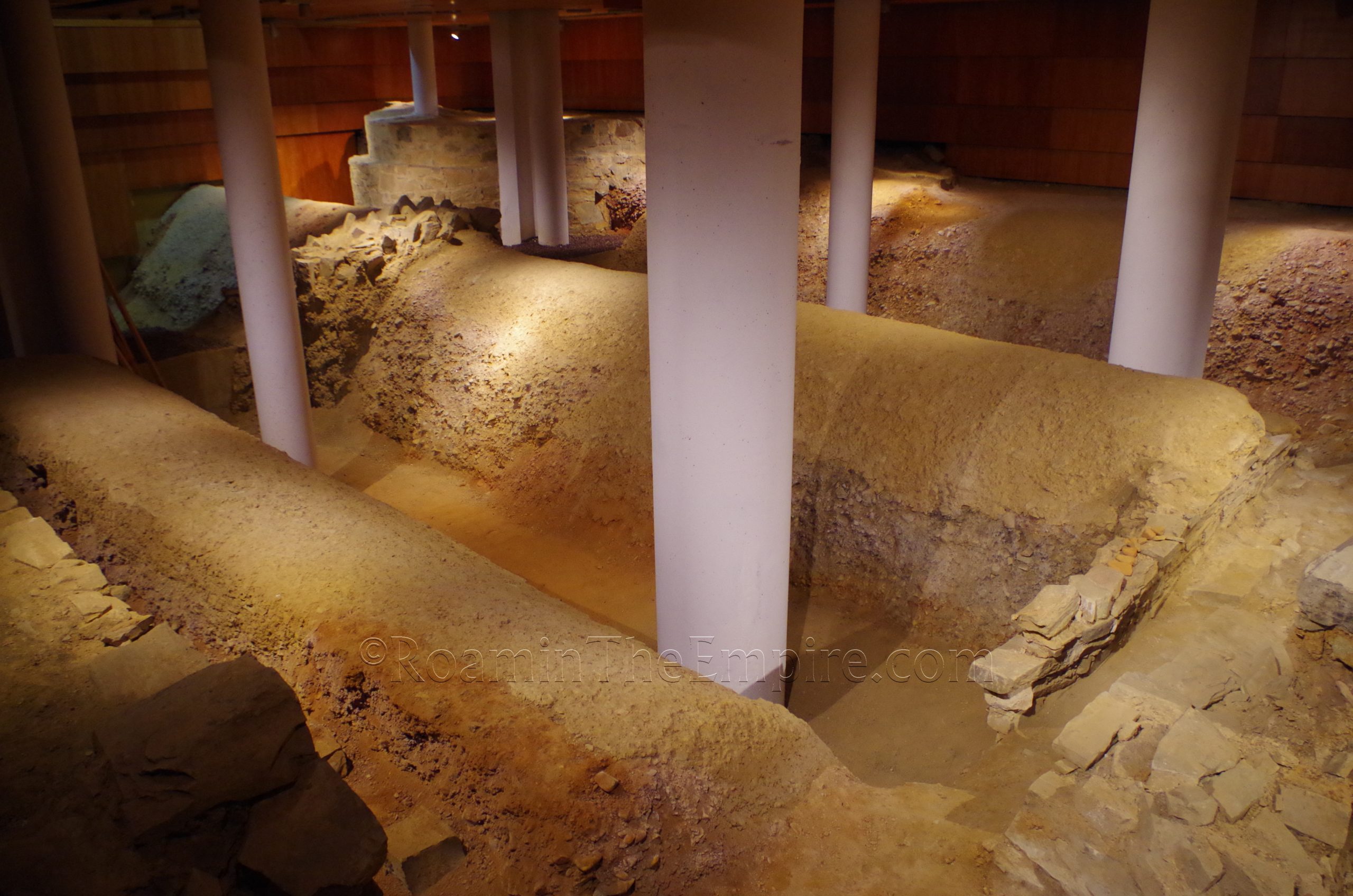
The first stop on the tour are the remains of the defenses of the legionary encampment that was constructed prior to the establishment of Asturica Augusta. Located just inside the circuit of the 3rd-4th century CE walls, this stop has preserved a small stretch of the double moat as well as some of the fortifications from the camp, including a rounded tower. These would have been built while Legio X Gemina was station at Asturica Augusta’s future location during operations in the region between 29 and 19 BCE and in the years that followed. After the establishment of the civilian settlement, the legion was moved to a camp in the area of the modern-day Vidriales valley to the south before finally being redeployed to the Limes Pannonicus in the middle of the 1st century CE. There is a sign here with an English translation of some information about the legionary fortifications and history.
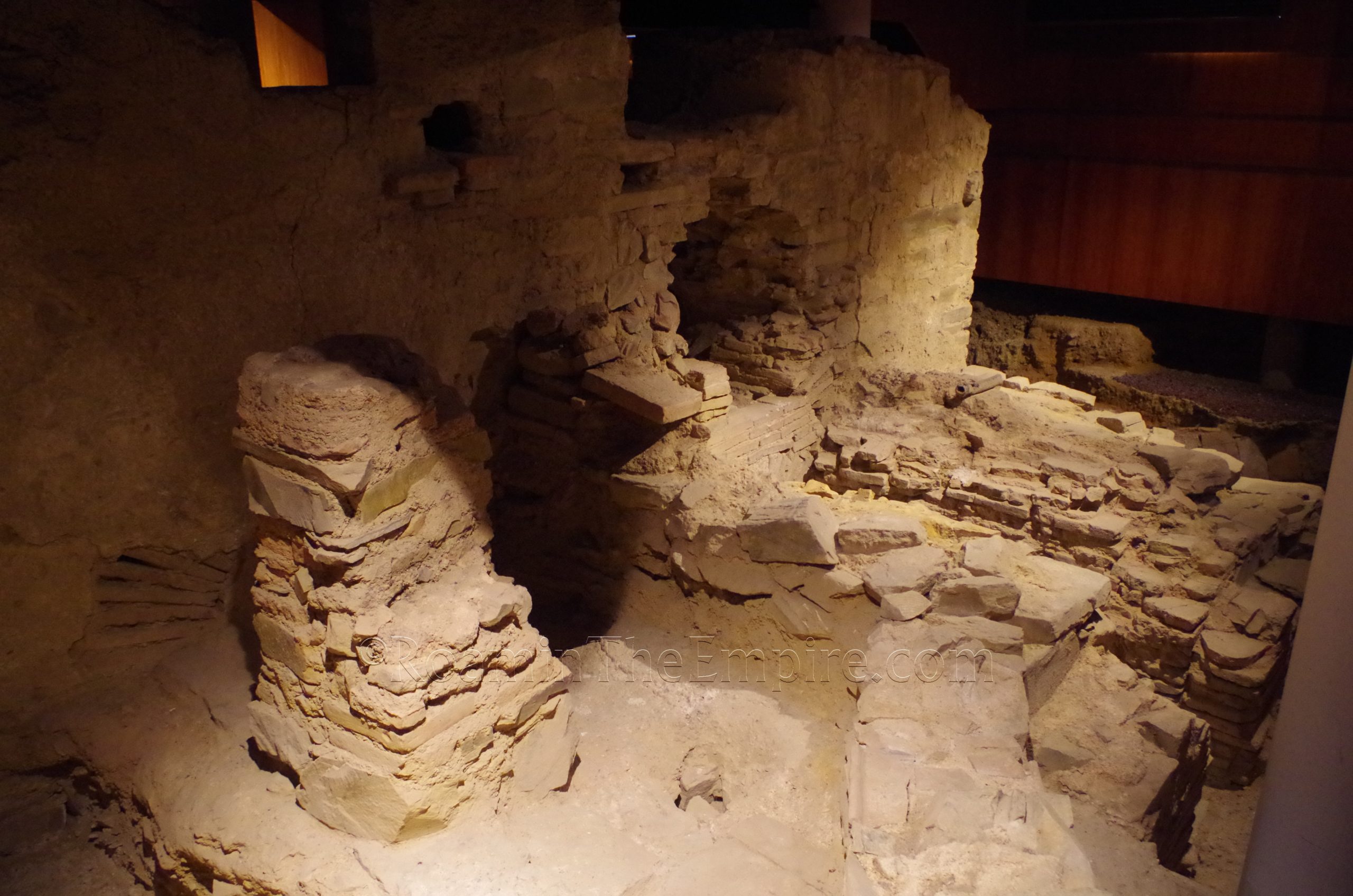
The next stop is a short walk down the road to the Termas Menores, the small baths. The baths were originally constructed in the middle of the 1st century CE, but underwent a major renovation and reorganization toward the end of the 2nd century CE. Finally, in the mid-3rd century CE, the baths seem to have fallen into disuse. A presentation using colored lights helps the visitor to distinguish the different areas of the bath, with the frigidarium, which is tucked away pretty far from the visitation path, is highlighted in blue light. The red lighted area shows the sudatorium, which is pretty prominently featured in the middle of the far end of the space (relative to the entrance). To one side (right when facing away from the entrance) of it is a very small section of the tepidarium, and to the other side (intersected by the walkway) is one of the caldria (Caldarium I). The yellow lighted area shows the praefurnium area and pool of a second caldarium on the nearer side of the sudatorium. Some of the remains of the hypocaust systems in the heated rooms are visible. Like the legionary fortifications, a sign with information in English is present here.
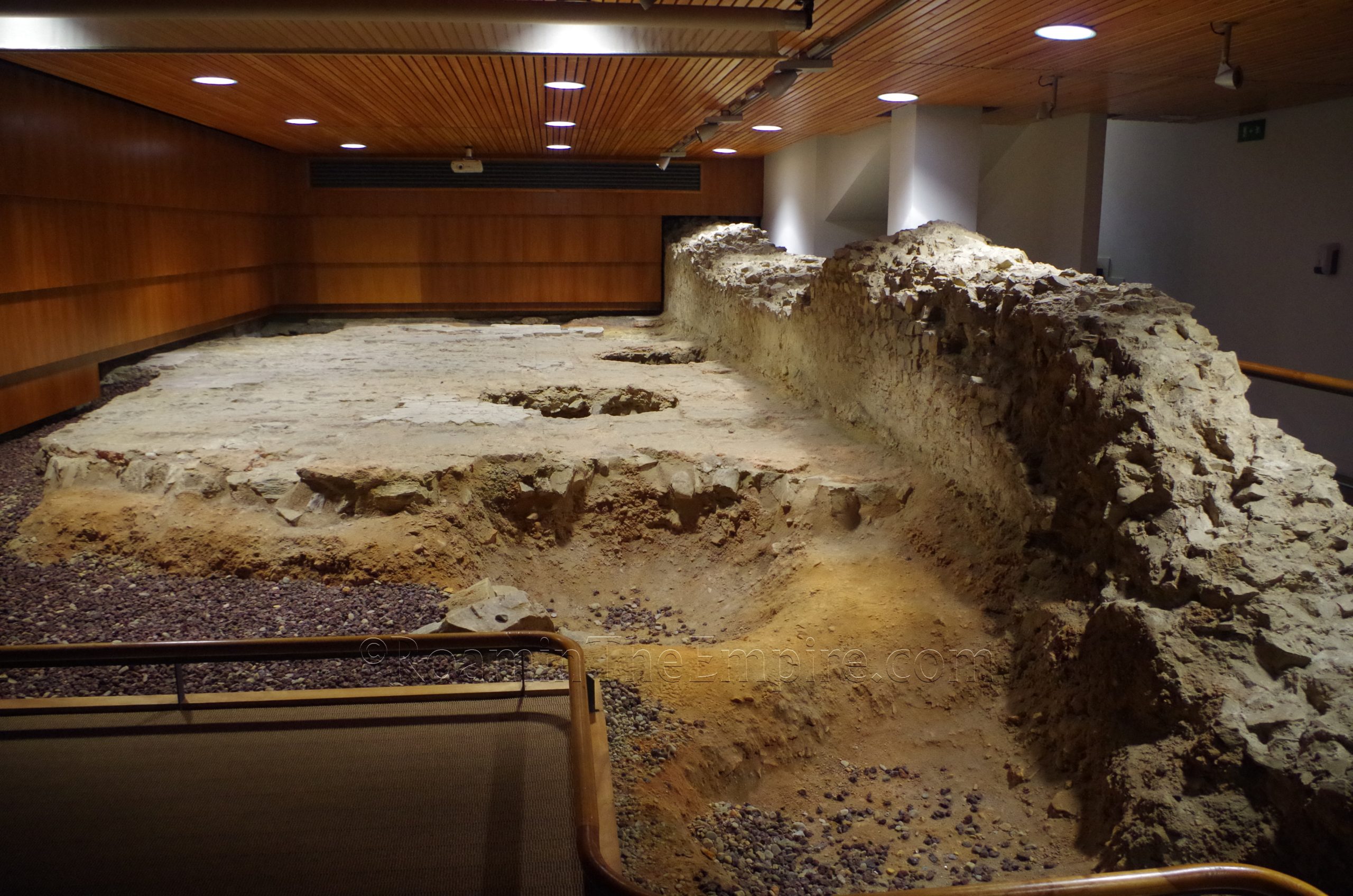
After the baths, the next site is the so-called Aedes Augusti. It still bears this name because the building found here is believed to have been the seat of the imperial cult in Asturica Augusta. It was located near the center point of the western side of the forum, adjacent to where the civic basilica. More recent research has posited the possibility that the structure could also have been the curia. The construction style of the buildings suggests it was built in the first half of the 1st century CE, perhaps during the reign of the Julio-Claudians. Part of the western wall and some of the floor, paved in opus sectile flooring (which remains in some spots) is preserved. A sign with English and Spanish explaining the imperial cult and forum, though not much about the specific building, is located in the space.
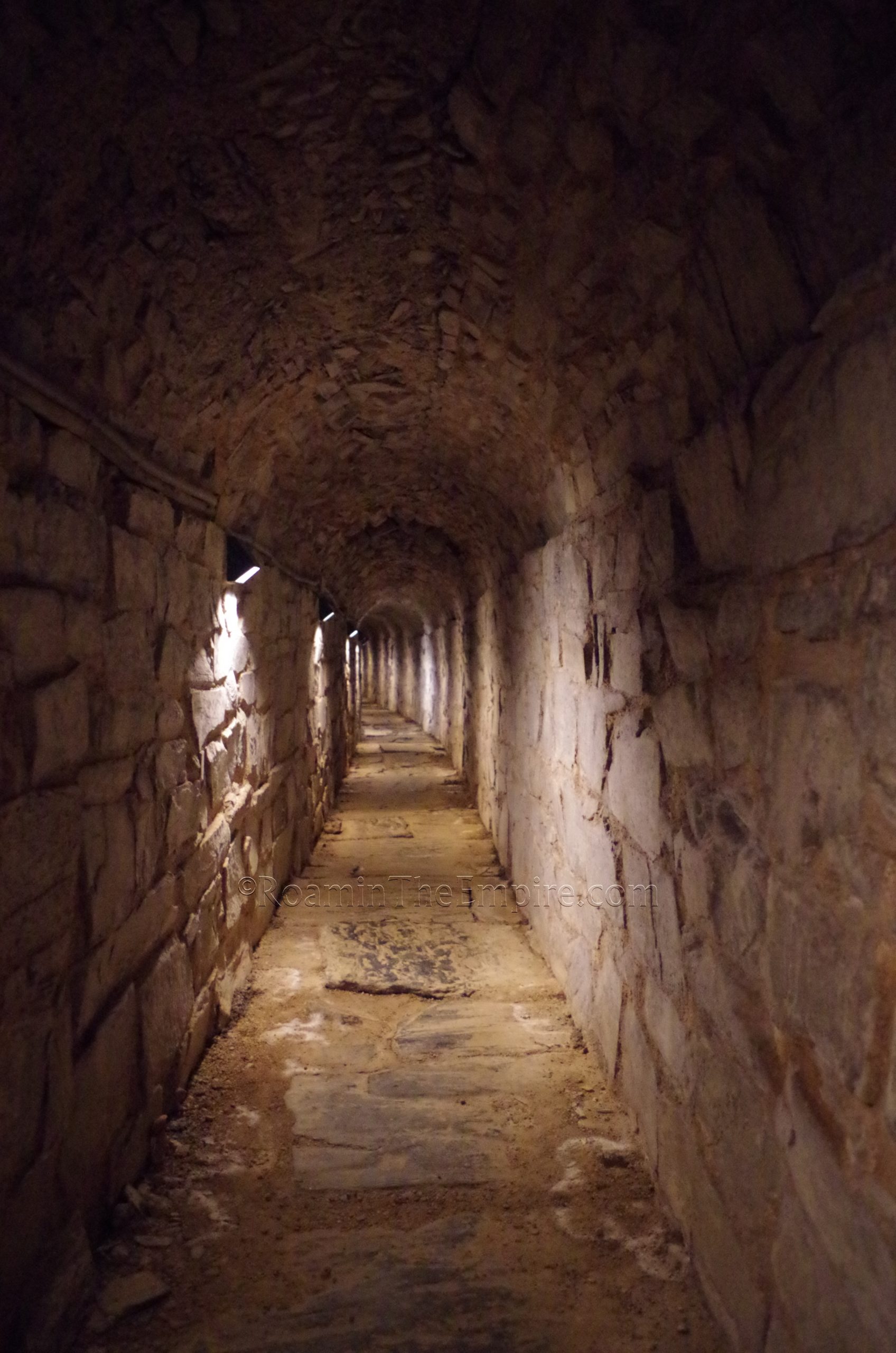
After a stop at the public remains of the forum (previously discussed) of Asturica Augusta the tour continues on to a segment of preserved cloaca, located now beneath the Jardín de La Sinagoga. This particular section of the sewer, which was part of the primary line, seems to have been constructed around 80 CE. Visitors are allowed to descend down to the sewer channel at the western side of the park and walk a length of about 70-75 meters before reemerging toward the center of the park. Along the way a few of the access shafts are visible leading up from the sewer to what would have been ground level. Other branches of the Roman sewer line are apparently still in use today. A sign with some English and Spanish information is available at the starting point of the sewer channel walk. After visiting the sewer, the tour concludes at the Domus del Mosaico del Oso y los Pájaros. The stated length of the tour is 1:45, but mine was closer to about 1:25, so it probably varies depending on the guide and visitor questions. The first three stops also included short multimedia presentations.
In all, the remains of Asturica Augusta are pretty easy to do in a half day trip of about 3 hours spent on the actual sites. The most difficult part is lining up the timing with the guided tour to see the four sites not publicly available outside of the tour. That took me two separate visits to Astorga to achieve. It’s a worthwhile visit, especially to see something like the legionary defensive ditches, which is one of the more unique points of interest in the city. The walk through the sewer line is also not a particularly common attraction for Roman sites.
Sources:
Grant, Michael. A Guide to the Ancient World: A Dictionary of Classical Place Names. New York: Barnes & Noble Books, 1997.
Marcos, Victorino García and Julio M. Vidal Encinas. “Recent Archaeological Research at Asturica Augusta.” Social Complexity and the Development of Towns in Iberia, From the Copper Age to the Second Century AD, Barry Cunliffe & Simon Keay, Proceedings of the British Academy Vol. 86, 1995, pp. 371-394.
Pliny the Elder. Historia Naturalis, 3.4.9.
Ptolemy. Geographia, 2.6.30.
Smith, William. Dictionary of Greek and Roman Geography. Walton & Murray, 1870.
Stillwell, Richard, William L. MacDonald, and Marian Holland. McAllister. The Princeton Encyclopedia of Classical Sites. Princeton, NJ: Princeton U Press, 1976.


